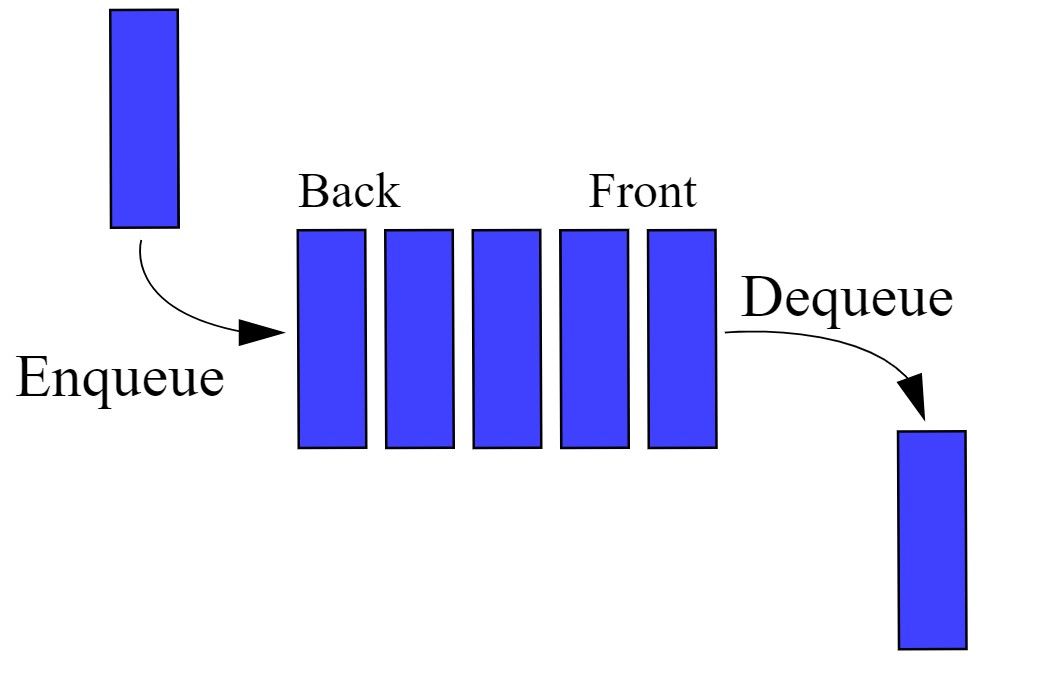As a programmer, you will work with different data structures depending on the scope of your projects. One such concept is a queue data structure; queues are essential for students and are used in many important algorithms. Like queues, priority queues share a similar concept but have a few fundamental differences.
Read on to understand queues and priority queues.
What Is a Queue?
A queue is a simple data structure that has a variety of applications in real-life coding projects. Data structures are inherently abstract, but for the sake of simplicity, we imagine that a queue data structure has a linear shape with two different ends.
In terms of time complexity, a queue allows insertion (enqueue) and deletion (dequeue) in O(1) time. Due to its asymptotic efficiency, queues are efficient for large datasets. Queues are first-in-first-out (FIFO) in nature, meaning a data item that is inserted first will be accessed first. In contrast, stacks have a last-in-first-out (LIFO) nature and have only one open end.
Imagine a ticket queue at a cinema; every new customer that arrives joins the queue at one end. One by one, every customer purchases a ticket and leaves the queue from the front end. The queue data structure functions precisely like any real-world queue, and data is inserted (enqueue) at one end and removed (dequeue) at the other end. You can now hopefully understand the reasoning of why queues follow a FIFO methodology.
A queue has plenty of real-life coding applications. It is more commonly used in applications where data does not need to be processed immediately but rather in a FIFO order. Disk scheduling, asynchronous data transfer, semaphores are some typical applications. First-come-first-serve scheduling tasks such as print spooling or input device buffers also use a queue.
What Is a Priority Queue?
A priority queue is similar to a queue, but it has additional properties. When a data element is enqueued into the priority queue, it is given a priority number. In contrast with dequeuing of a standard queue, data elements with a high priority are dequeued before data elements with a low priority. Priority supersedes the order of arrival in a priority queue, which is why priority queues do not have a consistent FIFO nature.
Programmers can implement a priority queue in several ways. A straightforward implementation is to use an array with a struct/class data item, and the data item will contain the priority of each data element and the data itself. Another primitive priority queue implementation is to use a linked list. Priority queues implemented through linked lists are functional but not ideal due to their performance.
You can implement a better priority queue with a heap. If you recall, binary heaps give the maximum or minimum element in 0(1) time, and insertion takes only 0(logN) time. With the help of heaps, priority queues give a better performance asymptotically when compared to queues or arrays.
A priority queue also has a variety of essential applications. Priority queues are crucial in graph algorithms such as Prim’s Minimum Spanning Tree and Dijkstra's Shortest Path algorithm. They are also ideal in computer processing unit (CPU) process scheduling algorithms.
Learn Data Structures
Queues and priority queues are important data structures for all beginners. It's crucial that students are comfortable implementing these data structures and using them in different projects.
Other data structures such as heaps, stacks, and trees are equally important for students and professionals. It is also very common for interviewers to question applicants on data structures.
Having read this article, you should now have a good idea about how queues and priority queues work. If everything still seems a little unclear, you'll get to grips with these as you gain more experience using them.


